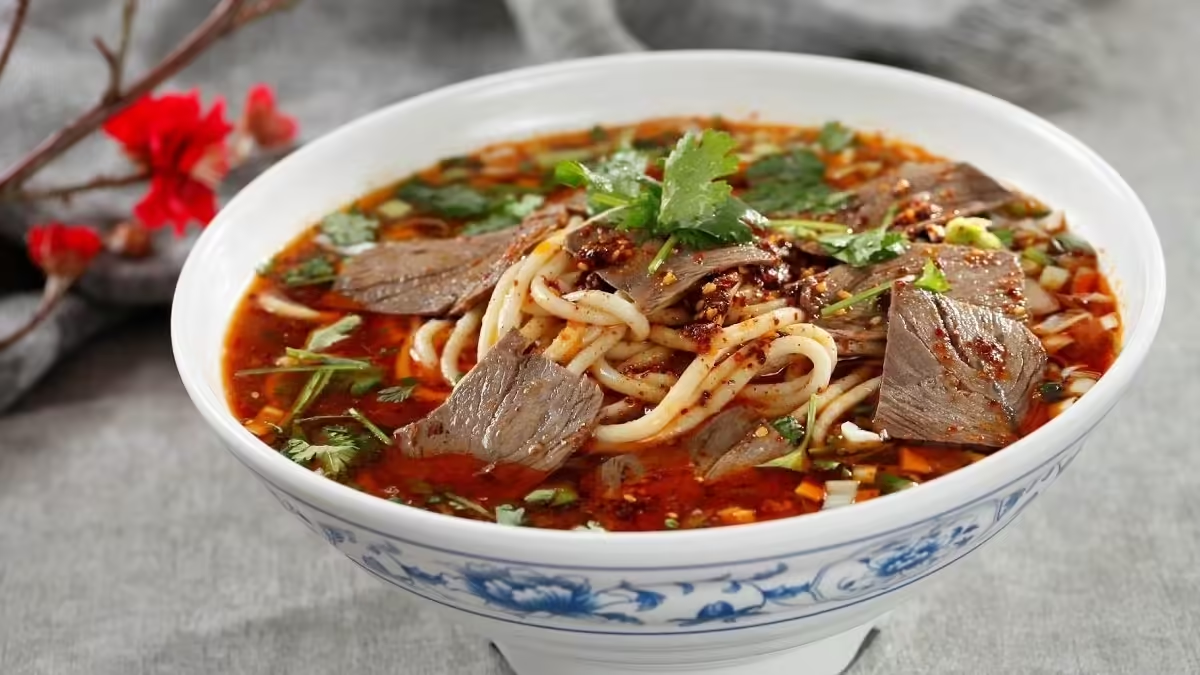Longdong Heluo Noodles (陇东饸烙面) trace their origins back to the picturesque Kongtong Mountain in Pingliang City, Gansu Province, boasting a rich history of over 4,700 years. According to legend, the Yellow Emperor, Xuanyuan, sought wisdom on health and longevity from the sage Guangchengzi. Guangchengzi introduced him to a nourishing dish made from buckwheat known as “tang bing” (汤饼), which is recognized as one of the earliest forms of noodles in Chinese culinary tradition. The Yellow Emperor himself named this delightful creation “Heluo.” This ancient delicacy has been cherished through the ages, with historical figures like King Yiqu and the famous Mi Yue also counted among its admirers.
Craftsmanship and Preparation
The preparation of Longdong Heluo Noodles involves a meticulous process that highlights the importance of quality ingredients and traditional techniques. The primary ingredient is high-gluten flour, though a blend of buckwheat flour, sorghum flour, and other grains can be incorporated to enhance both texture and nutritional value.
The process begins with dough preparation, where flour is mixed with an appropriate amount of water and food-grade alkaline. This mixture is then kneaded to form a smooth, elastic dough. Mastery of water temperature and kneading technique is essential to achieving the ideal chewy texture of the noodles.
Once the dough is prepared, it is placed into a specialized tool known as a “Heluo bed” (饸饹床子). By applying leverage, the dough is pressed through this tool, creating long, slender strands of noodles that fall directly into boiling water for cooking. After boiling, the noodles are removed, drained, and then tossed with hot oil to prevent sticking, keeping them flavorful and ready for serving.
Flavorful Broth and Accompaniments
The broth that accompanies Longdong Heluo Noodles is crafted with a rich blend of flavors. The process begins by heating oil to sauté dried chili powder and diced radish, releasing their fragrant essence. Next, scallions, garlic, ginger, and diced meat are added and stir-fried until cooked through. This mixture, known as “saozi,” serves as the flavorful base for the dish. The sautéed ingredients are then transferred to a pot, where diced tofu and water are added, allowing for a slow simmer to meld the flavors together. Various spices and seasonings can be introduced at this stage to enhance the aroma and flavor profile of the broth.
The dish is complemented by a variety of accompaniments, including seasonal vegetables like chives, shredded radish, and cucumber. Pickled vegetables can also be included, providing a tangy contrast that elevates the overall dining experience. These accompaniments not only enhance the dish’s nutritional value but also allow for customization based on individual taste preferences.
Texture and Taste
Longdong Heluo Noodles are celebrated for their delightful chewiness, which provides a satisfying bite. The broth is both spicy and aromatic, with the rich flavors of the sautéed ingredients enveloping the noodles. The combination of chewy noodles, savory broth, and fresh accompaniments creates a harmonious balance of textures and flavors, resulting in a dish that is not only delicious but also deeply satisfying.


